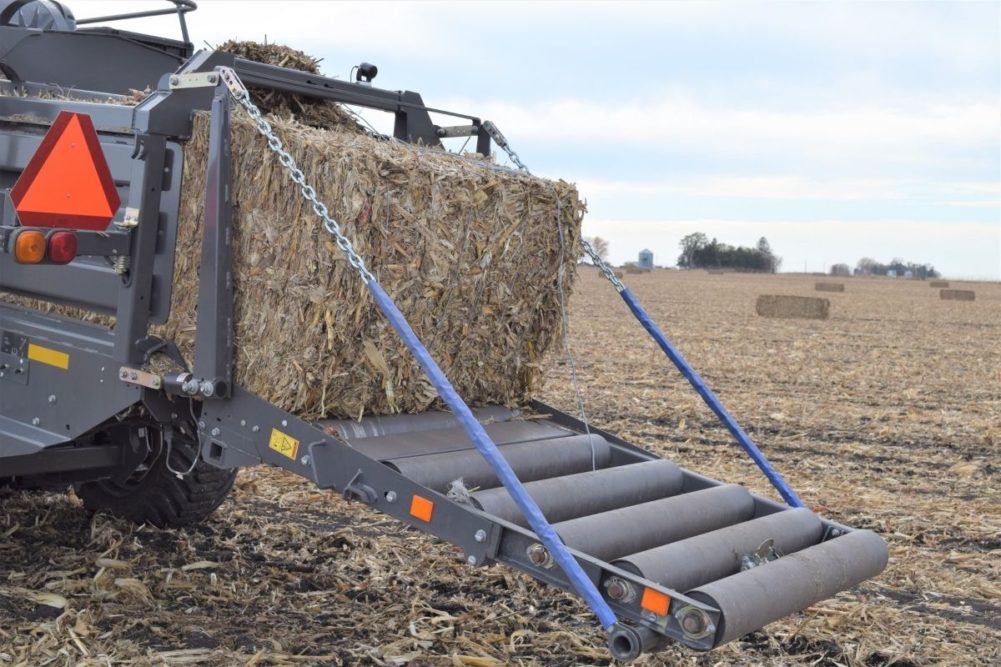AMES, IOWA, US — The Verbio North America plant in Ames, Iowa, US, has been producing a renewable natural gas from corn stover since Dec. 7.
Using anaerobic digestion, eight large digesters combine the corn stover with the bacteria of livestock manure to produce biomethane gas, which is the equivalent of natural gas found in fossil fuels. The gas enters an Alliant Energy pipeline that goes across central Iowa.
The Verbio Nevada Biorefinery plans to expand in the coming months with the goal of providing enough renewable natural gas to heat 5,000 homes. Eight additional digesters are being built with plans to build an additional eight, as the company begins to produce corn-based ethanol.
“Stover is basically aboveground plant material of the crop, other than the grain,” said Kapil Arora, field agricultural engineer with Iowa State University Extension and Outreach. “It can be chopped into different sizes, depending on the needs of the plant, and it can easily be made into bales.”
Iowa is the nation’s leader in corn production — with over 13 million acres and over 2 billion bushels harvested annually. After the corn is harvested, the stover is what is left behind to decompose on the ground.
Arora and ISU Extension and Outreach have been involved with Verbio from the start, providing technical support, hosting farmer meetings and conducting research.
After the corn is harvested, Verbio employees condense the stover on contracted fields into large square bales that are easy to move and stack. Verbio typically removes about 50% of the corn stover, which reduces the need for tillage and allows some farmers to pursue no-till planting by reducing the amount of residue left on the surface.
Farmers are paid $8 per bale and the equipment and labor are supplied by Verbio. The company contracted about 6,000 acres this year and hopes to expand to 30,000 acres in 2022.
“We’re taking the carbon degradation that would go up into the atmosphere, we’re capturing that, we’re scrubbing it and we’re allowing you to heat your home with it locally,” said Ron DeJongh, president of Verbio Agriculture.
The bales go through a hammer mill and are chopped to less than one-fourth inch size to create the most surface area possible, before being fed into digesters that are full of manure and bacteria that decompose the stover and create biomethane gas.
Gas coming off the digesters is scrubbed and concentrated to almost 99.9% biomethane, before being pressurized and pushed into an Alliant Energy pipeline in front of the plant. The plant plans to eventually become energy sufficient, burning its own gas to run various plant operations.
Verbio bought the plant from DuPont about two years ago. Original plans were to produce ethanol from the stover, but those plans did not come to fruition.
The new owners hope to continue the progress that was made and have plans to decommission the stacks of old bales of corn stover left behind by the previous owner.
Working with ISU Extension and Outreach, Verbio is improving its process and plans for growth.
According to Arora, who has studied corn stover for many years, Iowa has the potential to support additional corn-stover plants across the state. He predicts more plants will be built across the Midwest, as well.
“Traditionally we have taken energy from fossil fuels, which are buried deep in the soil, underneath the earth’s crust,” Arora said. “But this methodology basically takes carbon on the surface of the earth and cycles it into a fuel, and eventually we will be going down this path more and more.”
Arora is helping the company study logistics and engage with Iowa farmers and the public. Farmer meetings were held during the summer, and more will likely be held next year.
When fully operational, the Nevada plant plans to process about 100,000 tons of corn stover a year.
In addition to natural gas — the primary product — the process yields a nutrient rich byproduct called humus, which serves as a soil amendment and organic fertilizer.



